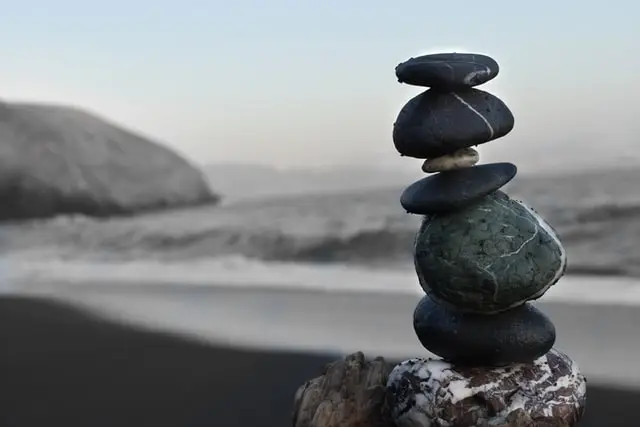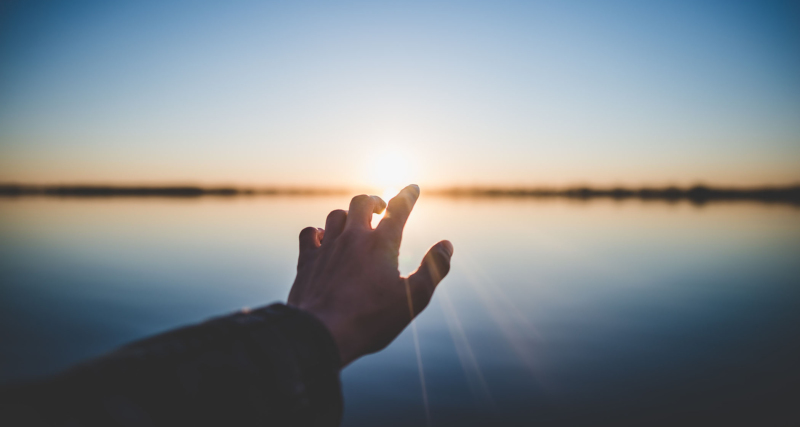By Janet Steinhauser
Photo by Colton Sturgeon on Unsplash
I wanted to write and thank everyone again for being so willing to try something new in class that involved embodiment. When we plan an activity for the group, we consider three questions: Why, What, and How. And as a former teacher, I often think in terms of outcomes: what would I want the seekers to be able to understand and do? With all that in mind I want to remind you of what we tried in class last Wednesday. Hopefully, this will encourage you to be in the Out!
Erika shared the beautiful words of John O’Donohue reminding us all that we belong and that we practice in the space of love. I notice that when I enter into the Zoom space for our Wednesday night gatherings, I feel relaxed (heartbeat regular, shoulders down and not tense) and also eager (my lungs feel full of air and open, and I notice my body wants to wiggle). Those are the sensations I have in my body when I get to belong in a space of love with you all.
Next we all shared examples of how love and fear can show up as sensations in our bodies. Many of us talked about feeling a constriction in the chest when we felt fear. Or a warmth in our body when we felt love.
And Erika shared in a post in our network that for her for a long time love caused her body to shake. We can have a myriad of body responses to love, fear, and all the many emotions we feel.
The rest of the time we spent dropping into the body with exercises and doing some noticing.
The Why of this practice was to intentionally focus on the changing sensations in our bodies by engaging with our TLC partners, so that we could be more cognizant of emotions and thoughts that come up in real-time. This is presence. Ego relaxation can ONLY happen if we are present in our bodies. Being only in the mind–thinking–will not support quieting the ego. The ego loves to drive us into over-thinking. This is how the ego believes it can keep us distracted and safe.
The What and How involved playing around with focusing on sensations in different parts of our body: What does the back of my left knee feel like? What does my right shoulder feel like? What does the top of my head feel like? We then partnered up to mimic stances held by our partners and to respond with a pose, pulling us into our bodies and our noticing even more.
What I had hoped to open up in you all is the idea that lack of awareness or presence means we have a lack of choices. When we are not grounded in our bodies, and our minds are in charge that can make us reactive machines. Or paralyzed ones.
If depression is related to being angry about being stuck in the past, and anxiety is about being stuck in the future (both limited ways of being), then being present is about being in the moment, which means being aware of our bodies, our thoughts, and the world around us. This is a world of infinite possibility.
Erika’s post about how her body responded to love in the past helped me to see something I hadn’t thought about with some of the embodiment exercises. I realized that when we do drop into our body (even during a light-hearted exercise) sometimes the sensation is pain–emotional, physical, psychological, etc. And we can go into resistance about feeling that and fly right back out of the body again.
When talking with Erika about this, she mentioned that maybe it would be good to encourage you all to invite in sensations that feel good. And spend more time noticing when things feel good, in preparation for when we feel pain. If we hang out in our bodies when we feel pleasure, maybe the practice will help us want to stay in presence with pain too.
Here are some suggestions for inviting in sensations that feel pleasurable:
Feel the touch of your bed-sheet or the weight of the covers on your body.
Slow down to really taste the sweetness of a dessert. Stay with presence for every bite.
Stay present with a hug from a loved one. Don’t rush out of the embrace.
When you are in a good mood, notice what sensations are happening in different regions of your body.
Conversely, it may also be helpful to notice sensations without labeling them as good or bad. For example, when I am hiking hard, I try not to think about how my body is “hurting” (no labeling), and just notice. This is what it sounds like in my self-talk, “You are breathing deeply. Your muscles feel warm. There is a sharp twinge in your left knee when you take a deep step up.” This way I’m less likely to go into resistance and let ego tell me that I’m having a certain kind of experience that I don’t want to have: uncomfortable, painful, etc.
How might you drop into your body more this next week? What are you noticing? Can you resist the thinking and the labeling and spend more time noticing? How is this helpful?
The reason we work with embodiment (presence) in TLC is because being in the body is the entry-way to awareness. All we need is contained in presence.


